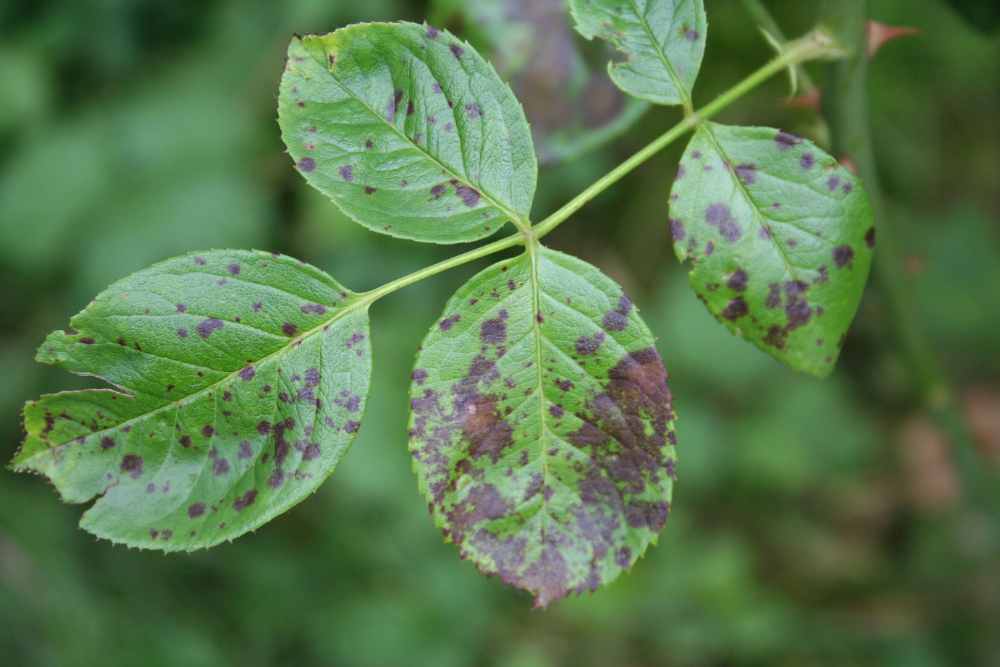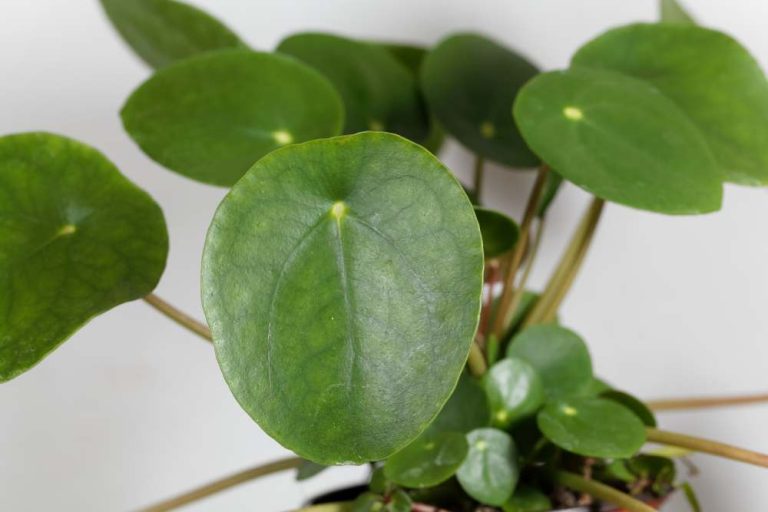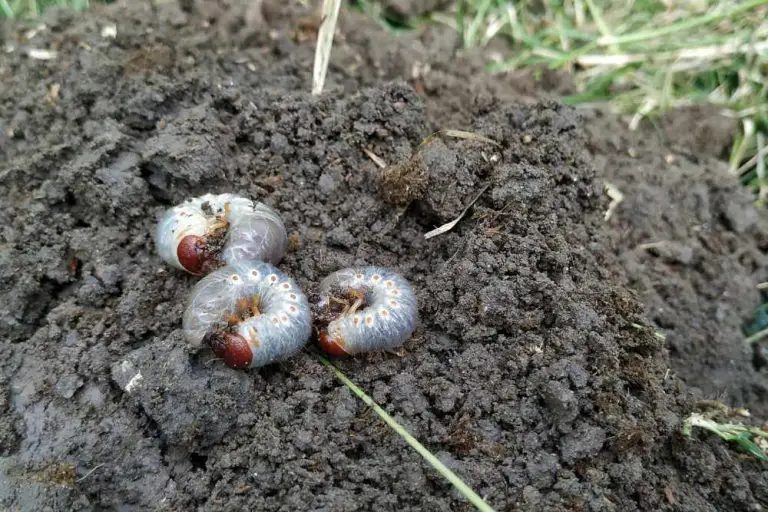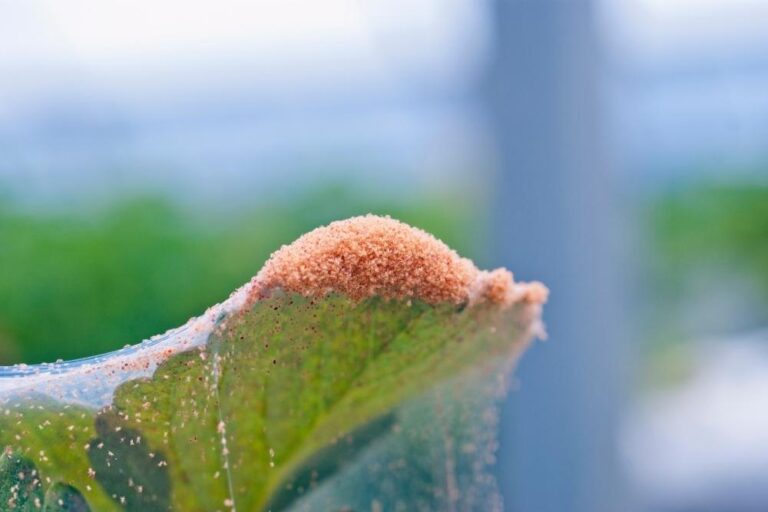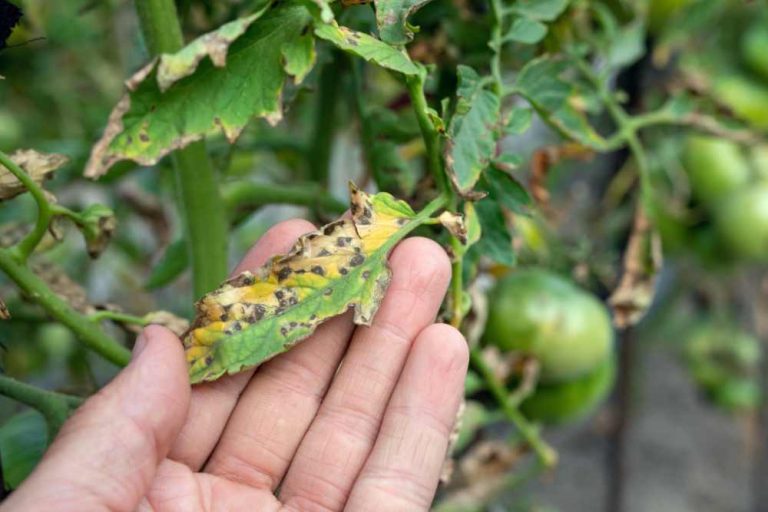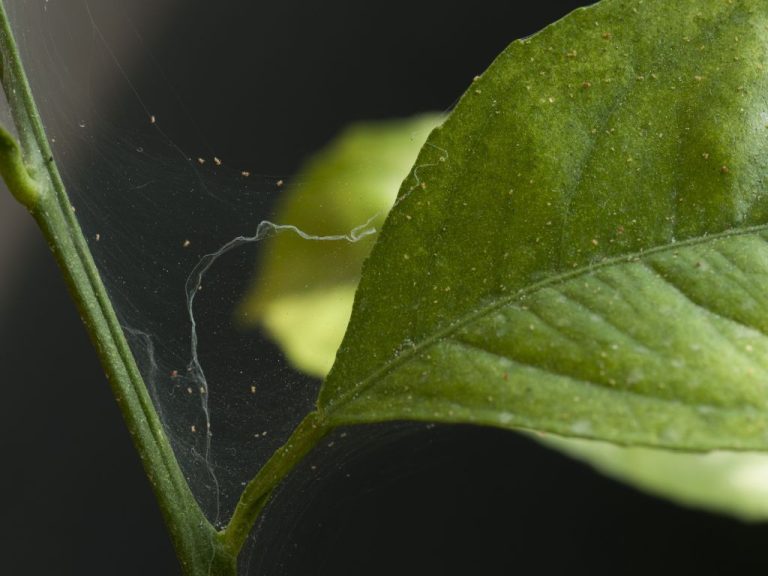Brown Spots on Outdoor Plant Leaves: Causes, Prevention, and Treatment
Spots on your plant’s leaves are a typical symptom of a problem with your plant. Leaf spot diseases have numerous reasons for occurring; mineral deficiency, overwatering, sunburn, and bacterial and fungal damage.
However, they frequently have a fungal origin. Additionally, since many common fungal diseases are similar, they can often be treated similarly. In many cases, preventing fungal infections just requires modest preparation before planting and regular preventive maintenance.
Brown spots on outdoor plant leaves are a common problem for trees and shrubs, particularly in ornamental gardening. These patches harm plants by interfering with photosynthesis. The majority of the time, leaf spot diseases do not immediately cause significant damage to your plants.
However, they might permit other problems to harm a plant’s health. Leaf spots typically are brown, although they can also be black or tan. Leaf spots can be stopped or controlled to lessen their harm to plants and their ability to spread. Both indoor plants and outdoor gardens can get fungal leaf spots.
What Are Brown Spots On Leaves?
Leaf spot diseases are a group of fungal diseases that commonly cause brown spots on leaves. It is more common for plants to get dark patches on their leaves owing to damp circumstances if they receive too much water or not enough ventilation and sunlight. Although various disorders can cause brown leaf spots, these issues are typically called leaf spot diseases to define and address them broadly. The distinguishing features are in various sizes, forms, and colors, including black, brown, red, orange, and yellow.
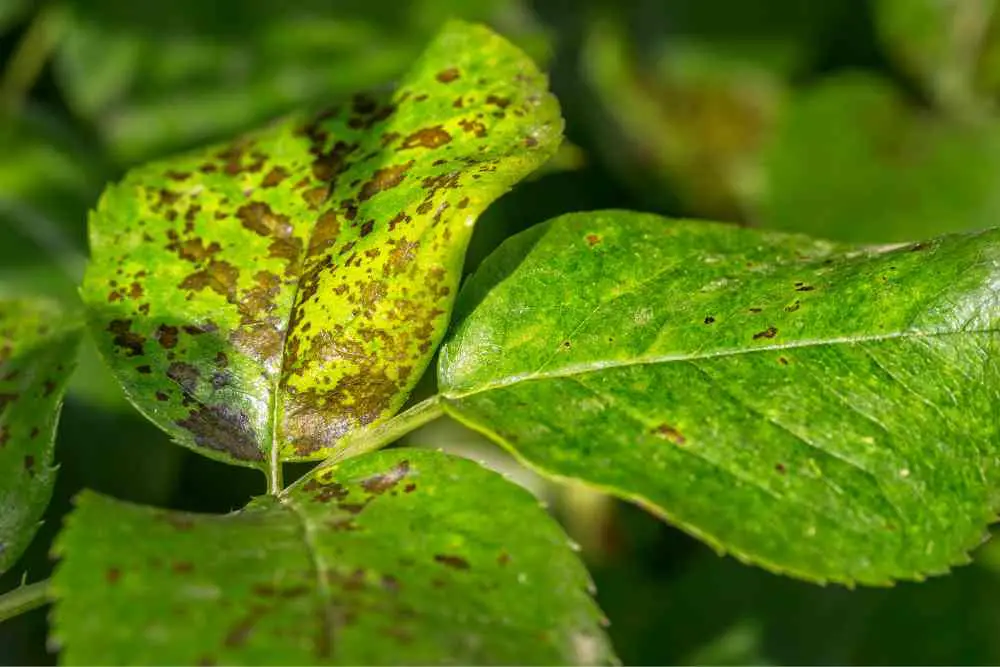
The marks, which can range in shape from circular to angular, are more frequently seen on lower or interior branches. Sometimes, the pathogen that causes the spores may be visible in the middle of the area. A bacterial leaf spot may occasionally occur on your plant if it contracts a bacterial infection rather than a fungal one. Small, yellow-circled, dark brown patches on the leaf that gradually dry out to form holes are the signs of the condition. The final merging of these dots will turn the entire leaf into a dark black-brown color.
Although bacteria or other pathogens bring on a small number of diseases, the bulk of leaf spot disorders are brought on by fungi. Infected plants must be members of the same family because many diseases are host-specific and only affect those species. Some infections that produce leaf spots cause leaves to fall off early, which causes the tree or shrub to lose most or all of its leaves.
What Causes Leaf Spot Diseases?
Leaf spots can be induced in a variety of ways. The most frequent cause is a combination of chronically excessive humidity levels and inadequate air circulation.
- Wet condition: Splashing water into leaves while watering or over-misting foliage are other common mistakes. Try to maintain the area at a cozy, regular temperature because temperature fluctuations may also harm the safety of your plants. These actions appear helpful, but if not done carefully, they could provide the ideal environment for these bacteria and fungi to emerge. A prolonged period of cold and wet spring can leave leaves with excess water on their surfaces, which can attract pathogens and lead to diseases like leaf spots
- Lack of sunshine and air circulation: When plants do not receive enough sunlight and air circulation, the resulting increase in moisture and humidity encourages the growth of infections, which causes brown spots on leaves.
- Plants that are excessively crowded: Spores or other infections on infected leaves can swiftly spread to surrounding host plants, especially if the plants are growing too close to one another.
- Garden waste piles: Over the winter, unattended garden garbage can harbor fungi and other pathogens, which can then infect plants the following spring.
The Life Cycle Of Leaf Spot Pathogens
The microorganisms that cause leaf spot diseases will survive the winter in decaying leaves. Some of them infect buds and young twigs as well. Infected plant tissue is transported throughout the canopy during the growing season by wind and raindrop splashing, spreading the pathogen’s spores.
For most leaf spot diseases, an infection must first develop after 12 to 24 hours of either wetness on the leaves or extremely high humidity. Leaf spots often reach maturity in one to two weeks. A second set of leaf spots may develop, or other plants may become infected due to the bacteria or spores that mature leaf spots release and disperse across the canopy.
When the weather is right, this infection and spore production cycle continues. Leaf spot infections can spread over a tree or shrub’s canopy in years with high humidity levels or frequent rain events, which can cause severe disease.
Preventing Plant Leaf Spots
To avoid the issue in your yard or your houseplant, and outdoor plants you can take a few simple precautions. Moisture and poor air circulation are two conditions that spotted leaves or the fungus that causes them to need to thrive.
Spotted leaves on your houseplant can be avoided by watering the soil instead of the leaves. Give your pots enough room between them to allow for adequate airflow. To avoid crowding and poor air circulation, prune your plant. The leaves should be trimmed out if it is tightly packed.
Tools for pruning and cutting should always be cleaned with a 1:10 bleach solution after each use. Before the leaves bud each spring, rake and remove all trash from the area surrounding your plants. This is typically not a significant issue for most indoor plants, especially vining plants. However, compact plants frequently have poor ventilation, leading to problems.
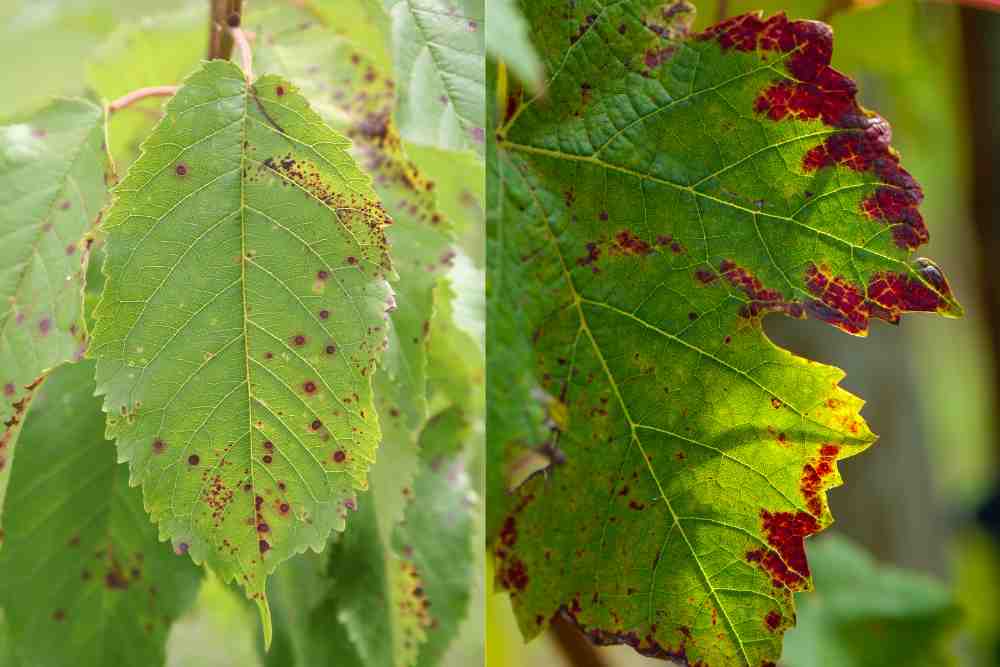
Never overwater a plant. This exposes your plants to various threats, including rotting roots and insects. Before each watering, do the knuckle test to detect how moist or dry the soil is. Water the garden early in the morning so that the leaves moisture can evaporate.
Keep the leaves dry and away from wet soil by not wetting them. Airborne spores are easier to attach to and infect a moist surface than a dry one. Watering at the soil level while preventing splashback is the recommended course of action in this circumstance.
Find out what your plant needs for basic care. Even though it is pretty simple to get this step incorrect, you are still helping the plant if you know its true demands. Even if it is as easy as understanding what kind of lighting it requires, you can avoid correctable mistakes.
Remove any leaf debris that may be on the ground. This shouldn’t degrade in your soil and feed pathogens since that would be bad. If your plant has brown patches, regardless of whether it is in a container, you do not want to take any chances.
How To Treat Brown Spots On Outdoor Plant Leaves
Remove and prune leaves that are severely impacted. Avoid this step if there are only one or two locations and move on to the next. To help it recover, avoid getting water on the leaves. Plants should be temporarily kept apart from the plant. Your other plants’ leaves will not become infected due to this.
Fungicides can stop the spread of leaf spot disease when the condition is bad every year. However, it should be noted that fungicides are ineffective on already-infected leaves. Thus, these should only be removed.
Only preventative methods use fungicides. However, since not all fungicides necessarily prevent all types of leaf spot disease, it is necessary to identify the precise type of leaf spot disease. For instance, copper fungicides help prevent Entomosporium leaf spots. This particular leaf spot is brought on by a fungus that produces tiny, reddish-brown spots that develop and darken as the leaf matures.
Give the foliage regular applications of neem oil or similar fungicide. Most plants can safely use copper-based fungicides, but you should always do your study because copper can harm some plants. Check every day to make sure the virus is no longer spreading.
Leaf Spots From Deficient Nutrients
Spotted or discolored leaves are a sign of nutritional shortages in plants when certain nutrients are insufficient. Nutrient shortages can cause the entire leaf to turn a particular color or just certain areas of the leaf. The oldest leaves or the newest shoots may start to show more yellowing.
Especially when symptoms first appear, you could also notice yellow dots or patches that resemble brown spots. Even if vitamin deficiency isn’t the reason for the leaf spots you notice, poor nutrition may still be to blame. Unhealthy, malnourished plants are more susceptible to infection from insect pests and plant diseases, such as those that cause leaf spots. Ensure your plant receives the necessary nutrients if you notice yellowing leaves.
You may improve the nutrients in your plants’ soil with Alaska Fish Fertilizer 5-1-1, which is OMRI-listed. You may give your plant a balanced combination of primary plant nutrients and additional crucial elements using a high-quality fertilizer like Pennington UltraGreen All Purpose Plant Food 10- 10-10. This encourages healthy, larger flowers and fruit as well as lovely foliage. With Pennington Epsom Salt, you may also help avoid yellow leaves caused by sulfur or magnesium shortages, allowing you to enjoy gorgeous green leaves once more.
Leaf Spots From Insects And Mites
Numerous insects chew large holes in leaves. Smaller sucking insects, however, penetrate or scrape the surfaces of leaves, leaving tiny holes that develop into leaf spots. Insect and mite leaf marks frequently have a pattern. Spots could be numerous near the leaf margins or on a single leaf section. If you examine them closely on both sides, spotted leaves may reveal the pests in action.
Additionally, you might see areas of feces or old insect nymph skins that are molting. Insects can cause a wide range of leaf spots. A magnifying lens can be helpful when looking for bugs in leaf spots. Mealybugs or whiteflies may source white patches on houseplants, including indoor lemon trees.
Thrip infestations are indicated by small black specks or silvery patches that mottle the undersides of leaves. If your indoor or outdoor plants have yellow or brown leaf patches, they may be the victim of spider mites. A broad-spectrum pesticide, such as Sevin Insect Killer Ready to Spray and Sevin Insect Killer Concentrate, can solve multiple pest problems at once when insects are the cause of your leaf spots.
These products’ touch kills more than 500 insect pests and offers protection against insects that cause spots for up to three months after that. Since spider mites aren’t insects, they require a different strategy. To get 2-in-1 pest and disease protection for your plant while also killing mites, use Sevin Sulfur Dust. When treating indoor plants with insecticides, take the plants outside.
- 20+ Chic Boho Bedroom Ideas for a Cozy and Stylish Retreat - June 20, 2024
- 12+ Modern Boho Living Room Ideas to Create a Unique Oasis - June 10, 2024
- 10 Stunning Canopy Bed Ideas for a Dreamy Escape - May 16, 2024

